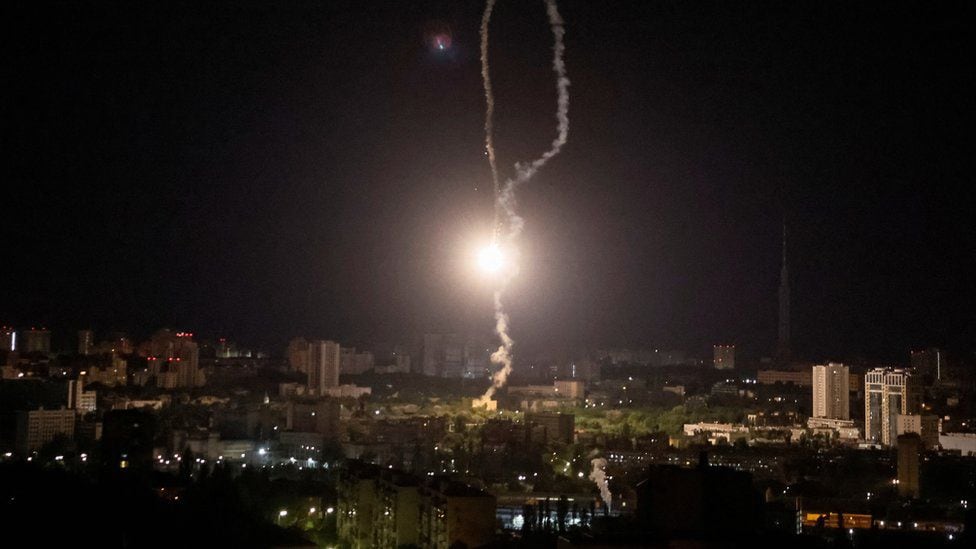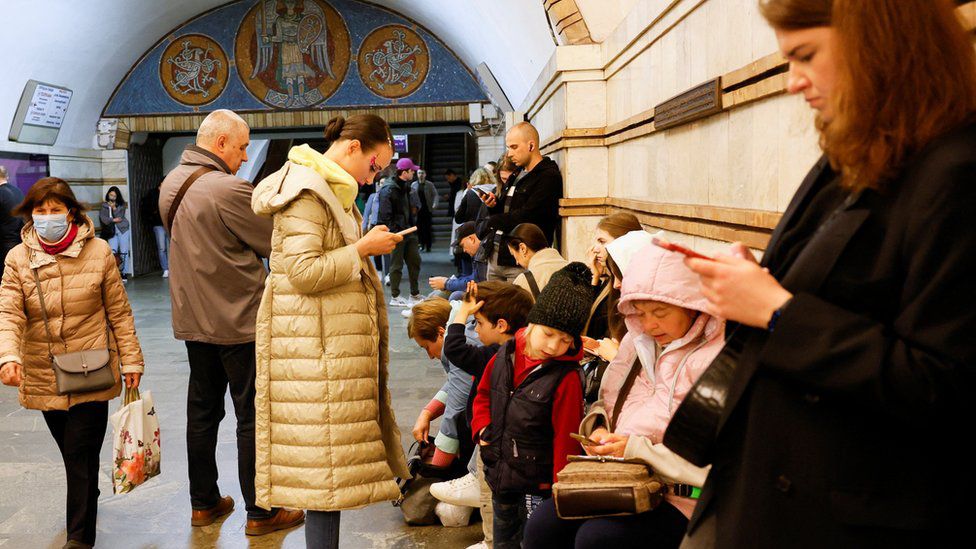:quality(75)/cloudfront-us-east-1.images.arcpublishing.com/elcomercio/2LUWLT5WIVFIVGANL7Z462GAPM.jpg)
The capital of Ukraine, Kyiv, has been repeatedly attacked by missiles and drones in recent weeks. Most attacks occur at night.
In the center of the city, Nataliya Lyashchenko has lost count of the number of times the sirens sound, drones and missiles have kept her from sleeping.
LOOK: “We cannot miss this historic opportunity”: Ukraine says it is ready for a military counteroffensive against Russia
He recounts that during a night attack the bright flashes of the shells in the dark sky made it look “like in Star Wars.”
raids like these they are more and more frequent.
Experts believe that Russia is changing its tactics in a attempt to undermine Ukrainian air defenses, but they also suspect that, to some extent, it is attacking the civilian population of Ukraine in response to setbacks received in the war.
BBC Verify analyzed the local media reports, eyewitness accounts, and statements by local officials and the Ukrainian military to build a picture of the increase in these airstrikes both in Kyiv and across the country since the beginning of this year.
In January, Russia launched airstrikes against different targets in Ukraine for only 3 days.
In May, that number increased to 21 days. There were also attacks the first two days of June.
In addition to intensifying the bombing, Russia seems to have changed its main objectives.
Dara Massicot, a senior policy researcher at the Rand Corporation, says the target of the attacks is undermine Ukrainian air defenses.
“Right now we are seeing more attacks against large population centers, which puts Ukraine in a position where it is forced to use interceptors to defend its cities,” he says.
Interceptors are surface-to-air missiles used to shoot down drones or missiles.

But there may be another reason for the increased frequency of attacks, Massicot says.
During this war, Russia has used missiles to show its population that it is doing something, and in this sense, Massicot suggests that the recent attacks are probably a reaction to the attacks that have taken place inside Russia and that Moscow attributes to Ukraine.
“I think we are seeing a combination of both: realizing that they need to wear down the Ukrainian air defenses and counter some of the setbacks it has suffered,” he explains.
The capital, the most affected
Russia has increasingly focused its attacks on the capital, Kyiv.
If in April, 2 of the 7 attacks against Ukraine were in the capital, in May it has been the target of 17 of the 21 bombardments.

And theseand has exacted a psychological price in city residents.
Polina Karabach lives in the suburbs, approximately five or six kilometers from the center of Kyiv.
On April 28, he woke up at 4 in the morning hearing loud noises coming from outside.
“I felt very anxious because the news channel I usually tune to was not working, so I couldn’t get a lot of details,” he told the BBC.
What he didn’t know at the time was that Russian cruise missiles were streaking across the sky, only to be eventually destroyed by Ukrainian air defenses.
Local officials say all missiles or drones that were targeting Kyiv were knocked down and that the damage that exists comes from falling debris. This it could not be independently verified.
Greg Bagwell, president of the UK Air and Space Power Association and former commander of the RAF, the British air force, told the BBC that Kyiv seems to be more of a strategic than a military objective.
“Kyiv is the center of government. And this fits with the idea of Russia really trying to create a totemic sense of victory. It’s more symbolism than actual military effect,” he explains.
Whatever the motivation, there is very few corners of Kyiv that have not felt the impact of the attacks with drones and missiles.

Nataliya Lyashchenko told the BBC about her experience during one of those raids, specifically the one on May 4.
“It started with air sirens at night and then about 15-20 minutes later the battle started,” she says.
He took refuge in a subway station a short distance from his home, carrying with him only his passport and his cat.
“It’s not a game. It’s a war”says.
“We have lost our jobs, our houses, our health. We have great challenges ahead. After our victory, it will take 10 or 20 years, maybe even more, to recover mentally. But I think we will survive, because the Ukrainians have shown a good determination to survive”, says Natalia.
Source: Elcomercio
I am Jack Morton and I work in 24 News Recorder. I mostly cover world news and I have also authored 24 news recorder. I find this work highly interesting and it allows me to keep up with current events happening around the world.






